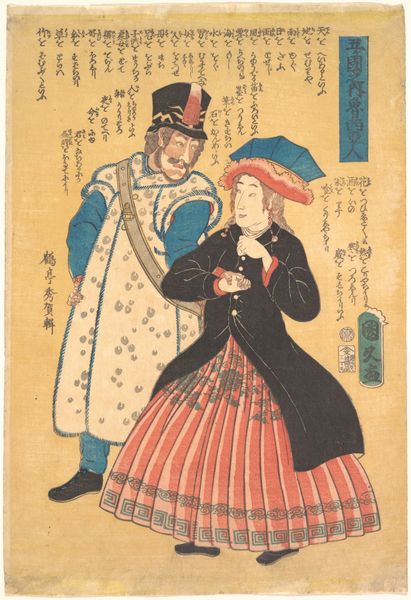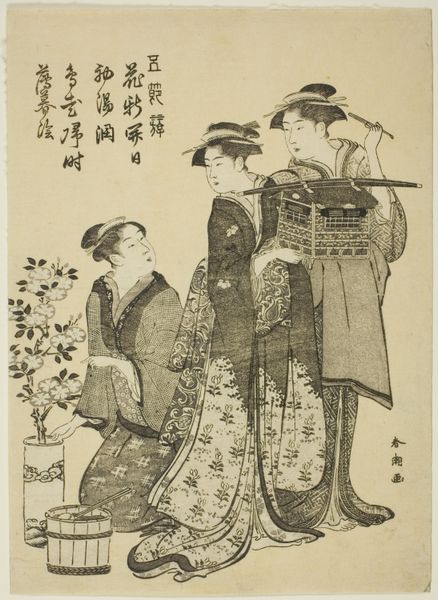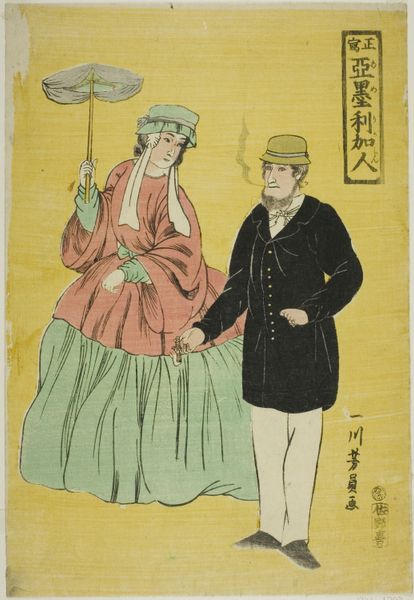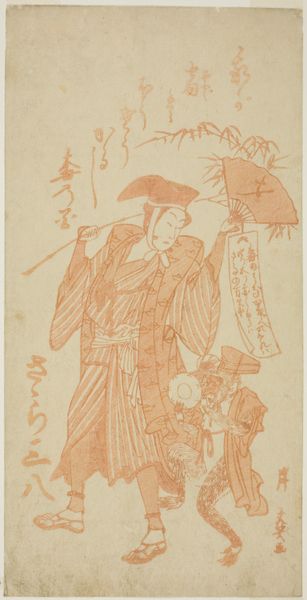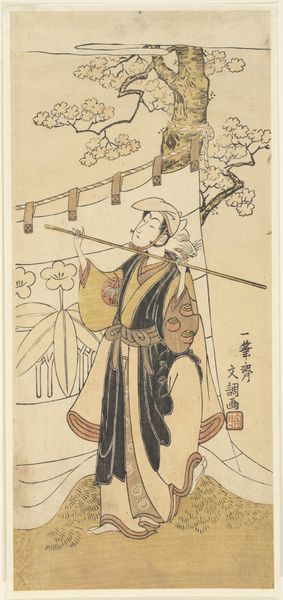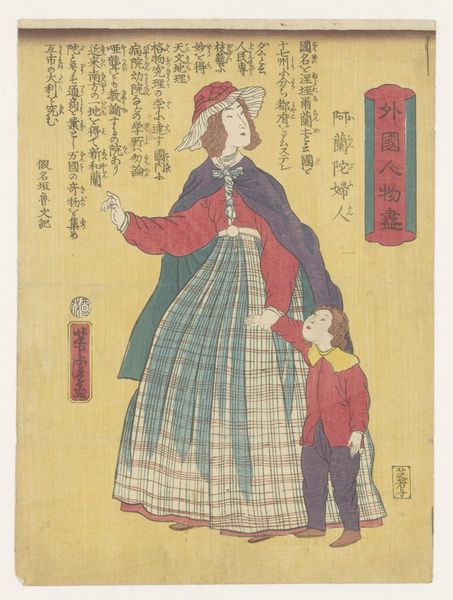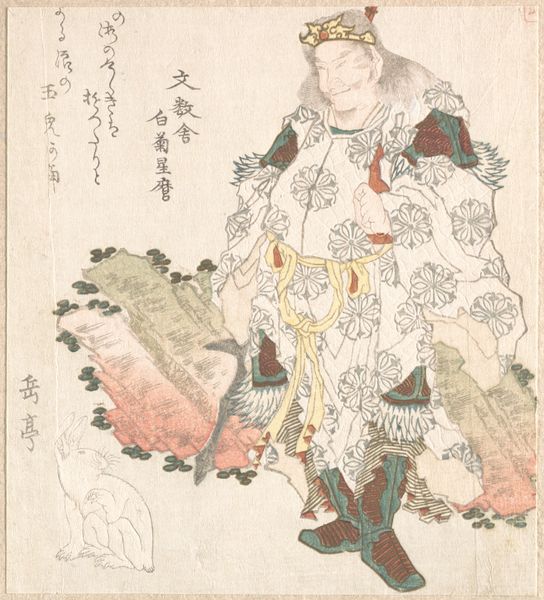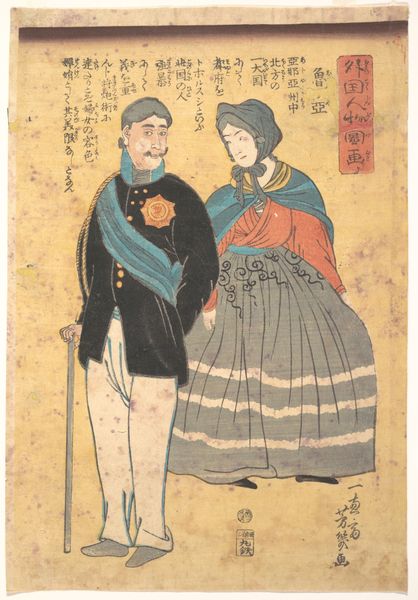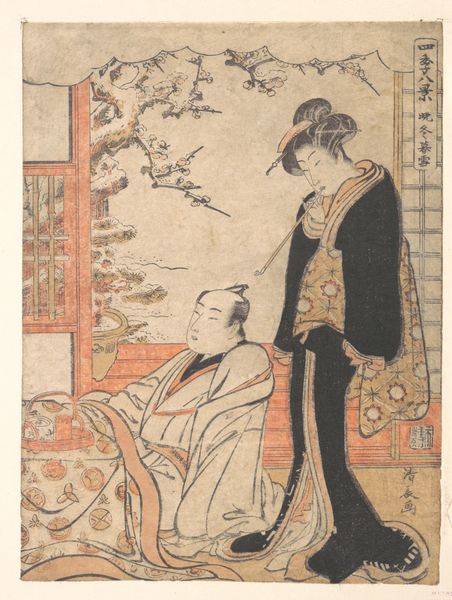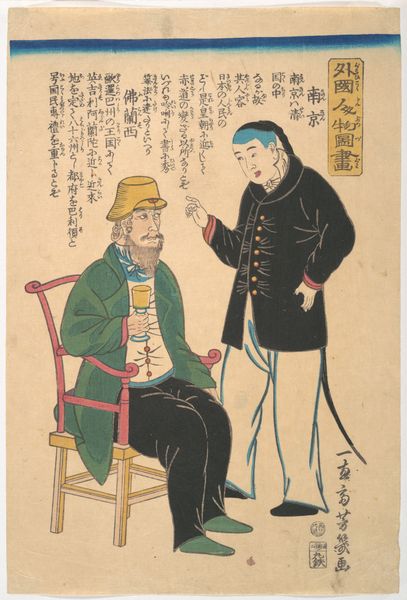
American Merchant Strolling in Yokohama 1861
0:00
0:00
#
portrait
# print
#
asian-art
#
landscape
#
ukiyo-e
Dimensions: 14 x 10 in. (35.6 x 25.4 cm)
Copyright: Public Domain
Utagawa Sadahide's woodblock print depicts an American merchant strolling in Yokohama. This work provides insight into Japan's evolving relationship with the West during the 19th century. The image creates meaning through visual codes that would have been apparent to the contemporary Japanese viewer. The merchant's Western dress, tall stature, and confident demeanor contrast sharply with the Japanese woman by his side, who appears demure and deferential. The dog in the background, also of Western origin, emphasizes the foreignness of the scene. This work was made during the late Edo and early Meiji periods, a time of immense social and political change in Japan. After centuries of isolation, Japan was forced to open its doors to foreign trade, leading to the influx of Western goods, ideas, and people. Prints like these, known as Yokohama-e, catered to a growing curiosity about the West while simultaneously reinforcing traditional notions of Japanese identity. To fully understand the nuances of this artwork, one might consult period trade reports, diplomatic correspondence, and illustrated magazines. By examining these resources, we gain insight into how social and institutional forces shaped the production and reception of art during a period of rapid globalization.
Comments
No comments
Be the first to comment and join the conversation on the ultimate creative platform.

